Mundo Maya
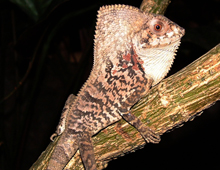
Helmeted basilisk, Corytophanes cristatus
An enormously developed extension of its skull lends this lizard a resemblance to the “Alien” of horror movies. In contrast to other basilisks (which can run so quickly they can stay above the water surface) this tree-dwelling species is a “sit and wait predator”, staying very still, until large beetles, grasshoppers, and other insects, deceived by its unlizardlike appearance, come close enough to be grabbed in its jaws. Found in Southern Mexico and the rest of Central America, it is not often seen in zoos. It has reproduced at the DWA.
LEARN MORE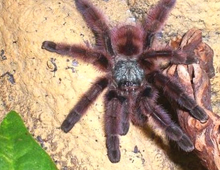
Antilles pink-toed tarantula, Avicularia versicolor
In the last thirty years, collecting exotic spiders has become an increasingly popular pursuit. This species, from the Caribbean islands of Guadeloupe and Martinique is a favorite among collectors and breeders because of its bright colors and docile behavior. A tree-dwelling species, it may attain a length of six inches. Captive specimens do well on crickets and mealworms. Their venom is comparable to that of a wasp. Like other tarantulas, their hairs can cause severe skin irritation, if they are mistreated.
LEARN MORE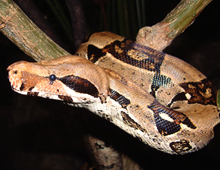
Red-tailed boa constrictor, Boa constrictor ortonii
Found from Mexico to Paraguay, this is one of the most well-known snakes, and has been popular in zoos for well over a century. It is also common in private collections. While it has a reputation as a giant, it actually rarely reaches 14 feet, and has never been documented to reach 20 feet. In contrast to the much larger Anaconda, it is not dependent on water in its environment, though it swims quite well. A nocturnal animal, it is often motionless during zoo visiting hours.
LEARN MORE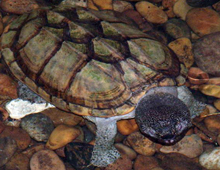
Mexican giant musk turtle, Staurotypus triporcatus
Known as the Gua in Mexico, this huge-headed turtle is also found in Belize, Honduras, and Guatemala. A giant among the musk and mud turtle family, it can attain a shell length of 14 inches. Despite its superficial resemblance to snapping turtles, it is not related. Prized as food because of its size, it is considered near-threatened. It is not common in collections, but has bred repeatedly at the DWA.
LEARN MORE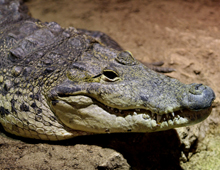
Morelet’s crocodile, Crocodylus moreletii
This is the smallest of the four New World Crocodiles, usually reaching about ten feet. Described to science in 1850, it then “disappeared” until the 1920s, when it was determined to inhabit the Yucatan Peninsula and the Mexican Gulf Coast to the north of it. This is one of the first crocodilian species to be bred in US zoos, more than 40 years ago. Its very broad snout gives it an alligator-like appearance, but the tooth protruding from the shut lower jaw clearly identifies it as a crocodile.
LEARN MORE
Mexican beaded lizard, Heloderma horridum
This larger, more arboreal relative of the Gila monster is easily distinguished from it by being black and cream-colored, rather than black and pinkish-orange. Like the Gila monster, it is venomous, possessing glands in its lower jaw. It is not found in the US, but occurs in Mexico and Guatemala. It appears to feed almost entirely on eggs of birds and other reptiles. Prized as a zoo exhibit, it has been bred in several collections, including the DWA.
LEARN MORE
Middle American rattlesnake, Crotalus simus
Found from northern Mexico to Central America, it was only separated by herpetologists from the South American Tropical Rattlesnake (Crotalus durissus) in 2004. Unlike its South American relative, but in common with most other rattlesnake species, its adult venom is primarily haemotoxin, rather than neurotoxin. It stands out among other Mexican Rattlesnakes for the twin stripes running from the back of its head down a portion of its body, and its unusually rough-looking scales. Rattlesnakes were revered by the Mayans and Aztecs.
LEARN MORE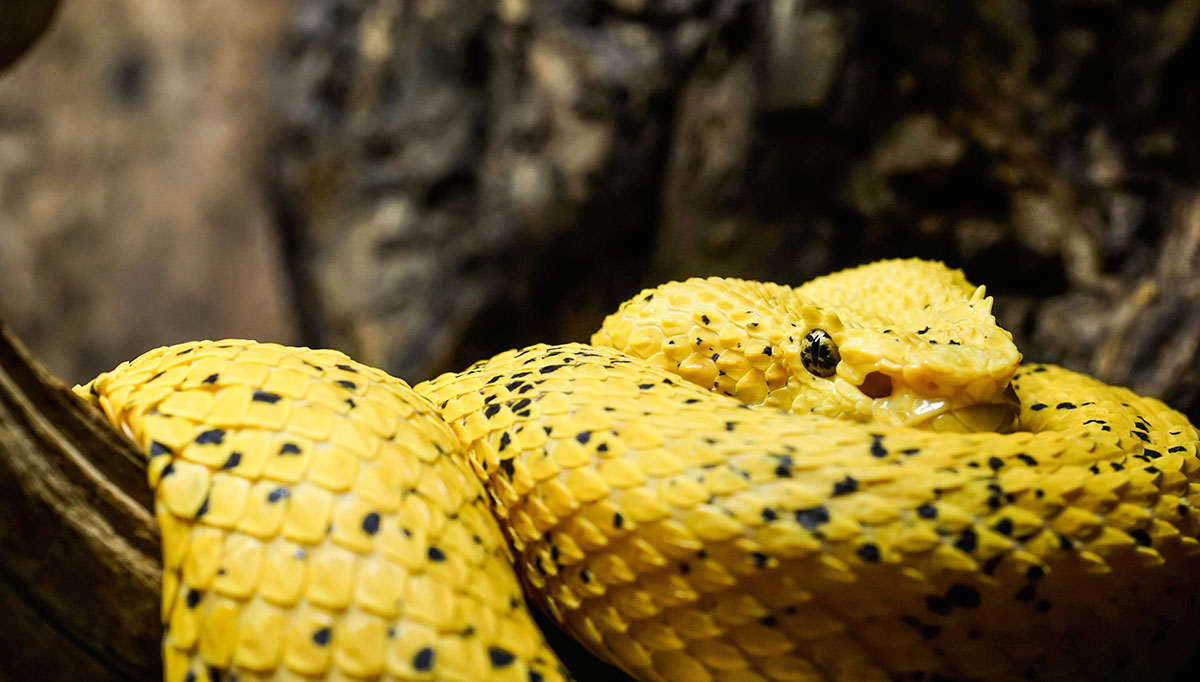
Eyelash palm viper, Bothriechis schlegelii
There are a number of small Tropical American prehensile-tailed, tree-dwelling pit vipers, but many of them have small distributions and are very rare. This species is found all the way from southern Mexico well into South America and is one of the more likely tropical American vipers to be seen in captivity, where it breeds well. Its name comes from the pointy scales above its eyes. It is famous for its many color phases. Orange ones are especially popular in zoos.
LEARN MORE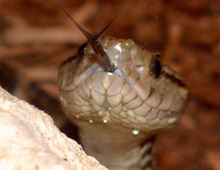
Central American fer-de-lance, Bothrops asper
One of the most infamous of the world’s venomous snakes, this species is the leading snakebite species in its habitat. It is found from southern Mexico down to Northern South America. Like rattlesnakes, cottonmouths, and copperheads, it is a pit viper, equipped with heat sensing organs in a cavity between their eyes and nostrils. Females grow much larger than males, weighing more than ten pounds, and have bigger heads and longer fangs. The haemotoxic venom causes severe tissue damage, and many fatalities have been recorded.
LEARN MORE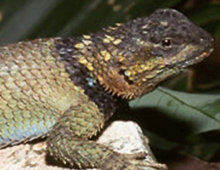
Crevice spiny lizard, Sceloporus poinsettia
There are more than ninety species in the genus Sceloporus, many of them familiar as “Blue-bellies”, “Swifts”, and “Fence Lizards”. In the same family as “Horned Toads”, they are found across through much of the US, Mexico, and Central America. This species is found throughout in the Chihuahuan Desert, on both sides of the border in Texas, New Mexico, Chihuahua and Coahuila. Its name honors Joel Poinsett, amateur scientist and first US minister to Mexico (1825-1830) after whom the Poinsettia is also named.
LEARN MORE

